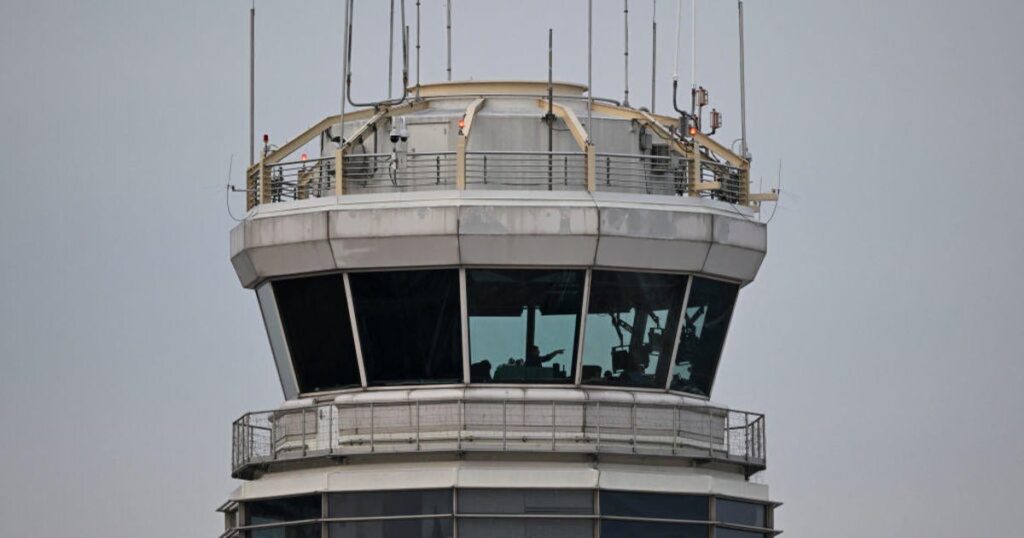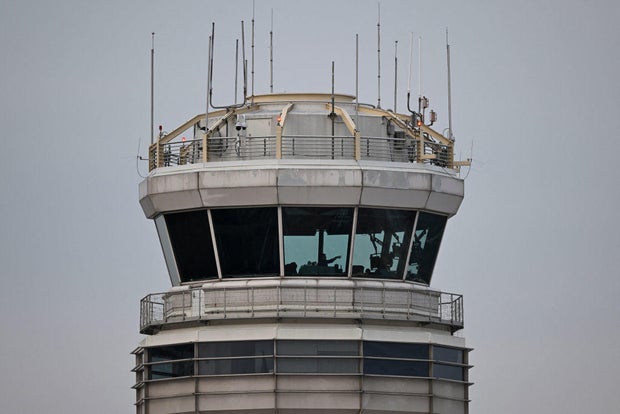Less than 10% of the nation’s airport terminal towers have enough air traffic controllers to meet a set of standards set by a working group that included the Federal Aviation Administration and the controllers’ union, according to a CBS News analysis of FAA data.
The issue has received renewed scrutiny following Wednesday night’s midair collision between an American Airlines flight and a Black Hawk Army helicopter near Reagan National Airport outside Washington, D.C., that killed 67 people.
Only one air traffic control worker was managing the helicopters and some planes from the Reagan National Airport tower at the time of the collision, a job normally done by two people, two sources told CBS News Thursday.
Only about 2% of the towers met the Collaborative Resource Working Group’s 2024 staffing targets for the number of fully-trained air traffic controllers. Only about 8% met the target even when including hundreds of air traffic controllers who are still in training, according to the analysis of 2023 staffing data for nearly 200 airport towers.

Additionally, none of the nation’s Air Route Traffic Control Centers that handled high-altitude “en route” traffic had enough fully-trained controllers to meet the targets either.
The data, from the end of fiscal year 2023, was published in the FAA’s Air Traffic Controller Workforce Plan, an annual report to Congress on the status of the agency’s efforts to overcome a decades-long struggle to recruit and retain enough controllers to keep Americans safe while flying. The data shows staffing at the end of fiscal year 2023.
Nationwide, the working group’s target for controllers was about 14,600, the report found. Counting only fully-trained controllers, the nation’s air traffic system is at about 72% of that target. It’s at 87% if trainees are included. That’s about 3,000 to 4,000 controllers short of the targets, depending on whether the hundreds “in training” are counted.

In the report, the FAA cites the COVID-19 pandemic as one of the reasons it has struggled to meet staff expansion goals at air traffic control facilities across the country.
“The COVID-19 pandemic has had substantial impact on the aviation industry and the FAA,” the agency said in its report. “At the onset of the pandemic, in order to protect employees and help ensure continuity of operations, certain activities were eliminated or significantly reduced at FAA’s air traffic control (ATC) facilities.”
OLIVER CONTRERAS/AFP via Getty Images
The agency also noted that “on-the-job training of developmental air traffic controllers was significantly reduced,” as well as hiring targets. The agency said that had a significant impact on its efforts to develop fully-trained controllers.
The staffing targets in the report are goals based on an analysis by a group that included FAA’s Air Traffic Organization as well as the controllers’ labor union, the National Air Traffic Controllers Association.
The FAA also included in the report its own internal staffing standards for each facility. Using that standard, which is lower for many facilities than the working group’s targets, 45% of the airport towers met the standard, counting only fully-trained controllers. If all controllers in training are included, 59% of the airports met the lower FAA standard.
“If we hired 2,000 people today, in two, three years from now, we’d see only about 1,000 of them become a certified air traffic controller,” National Air Traffic Controllers Association president Nick Daniels told CBS News.
Tim McNicholas and
Kris Van Cleave
contributed to this report.
https://www.cbsnews.com/news/over-90-percent-u-s-airport-towers-understaffed-air-traffic-controllers-data-shows/




